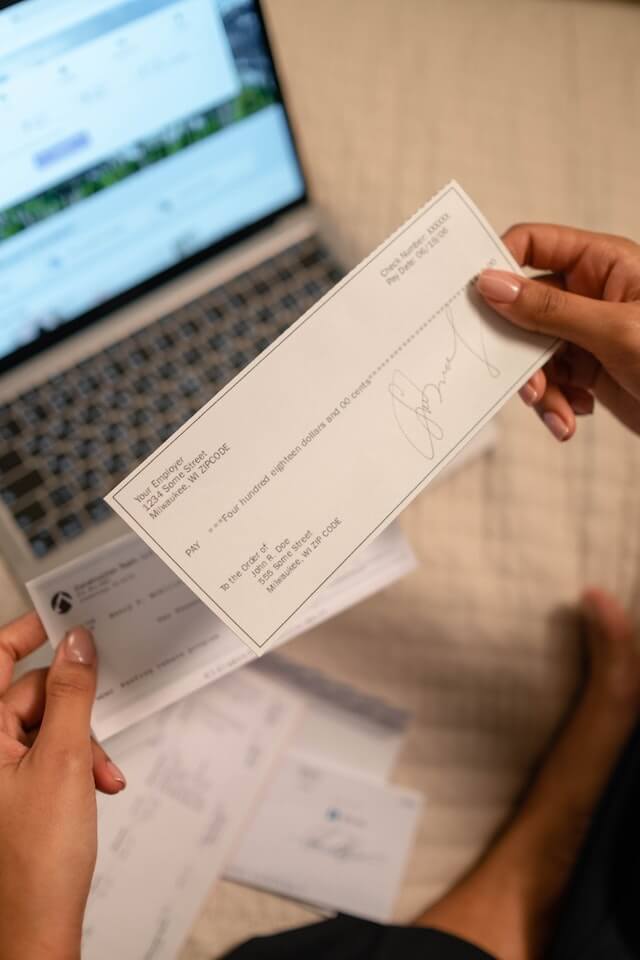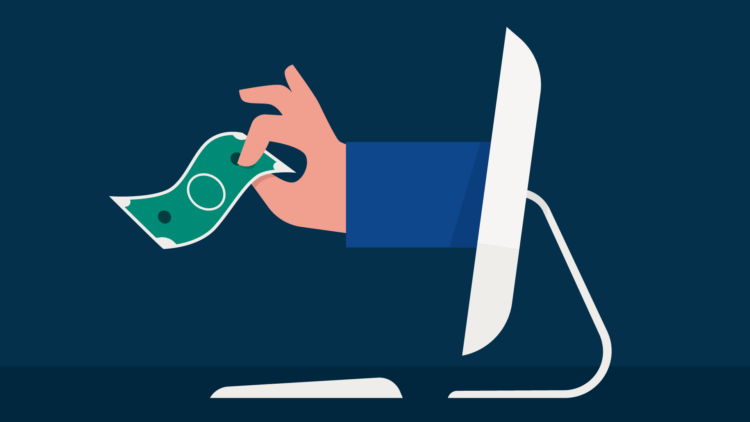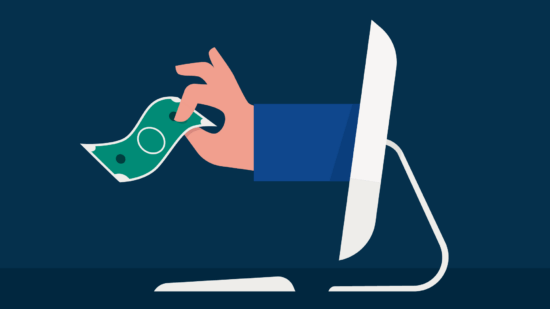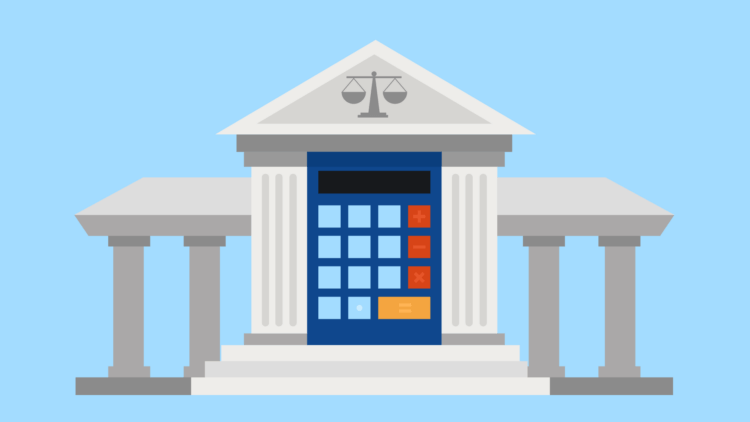Getting paid—quickly—is central to the success of any small business. Making it easier and more convenient for your customers to settle their bills is key. With this in mind, you may be wondering if offering to accept ACH payments could benefit your business and your clients.
As a secure electronic payment method, the ability to accept ACH payments quickly and easily allows you to give your clients a seamless payment experience while helping your law firm get paid faster. But, as with any business decision, it’s important to understand your options when determining what types of payment options you want to provide.
Below, we’ll explore the essentials of accepting ACH payments—including what they are, some of the main benefits they can offer small businesses and their clients, and how Clio makes it easy for law firms to process ACH payments.
Using Clio’s billing features allows law firms to offer clients flexible payment options, including our mobile app’s tap-to-pay, online payments, eChecks, ACH transfers, split billing, and more–Book your demo.
What is “ACH”?
The Automated Clearing House (ACH) is the system that agencies use for electronically transferring money from one financial institution to another, mostly in the United States. The ACH is run by the National Automated Clearing House Association (Nacha).
What is an ACH payment & how does it work?
ACH payments are a type of electronic funds transfer (EFT) that occurs when money is sent from one bank to another bank via the ACH network. With ACH payments, a customer authorizes funds to be transferred from their bank account to a business’ bank account.
The eCheck—AKA the electronic version of a paper check—is one common example of a type of ACH payment.
Advances to the modern ACH network in recent years allow ACH payment to be processed relatively quickly. Depending on variables like the time of day when a transaction is initiated, ACH payments typically take at least five business days to process.
What are ACH payments?
ACH payments are electronic transfers between banks using the Automated Clearing House network. They're commonly used for direct deposits and bill payments and are cost-effective, usually taking 1-3 business days to process.
Why should I consider accepting ACH payments?

ACH payments can unlock multiple benefits for businesses—and customers. Here are some of the key reason to consider offering ACH payments:
Quick and easy payments
When it comes to determining which types of payment options you want to offer your customers, convenience and speed are priorities.
Think about traditional payment methods like physical checks. Paying by check is a tedious process that requires the customer to manually fill out and mail a check. Even if your client pays promptly via check, it still takes time to mail, receive, and process it. There are plenty of opportunities for a check to get lost or require time-consuming manual error corrections.
In comparison, ACH payments are easy for clients to send and for law firms to receive in just a few clicks. This straightforward and simple process makes it easier for clients to pay you, and makes it faster for you to receive payment.
Saving time—while making money
The saying “time is money” seems to find fresh meaning when we think of the opportunities for today’s businesses when it comes to payment options.
From a business perspective, the ease of ACH payments doesn’t just make it easier for clients to pay you faster; when you spend less time chasing down or processing payments, you free up more time to focus on revenue-generating tasks. In this way, easier payments can do more than just bring in revenue more quickly—it can also help support business growth.
Looking at the legal industry, Clio’s 2021 Legal Trends Report underpins this connection—the report found that growing firms were 37% more likely to use online payments.
Lower processing fees
Transaction fees add up, especially for smaller businesses. While the exact amounts vary, ACH payments typically have lower processing fees than other payment forms like credit cards.
Giving clients the payment options they want
Today’s customers, regardless of industry, expect convenience and flexibility when interacting with businesses. In fact, the 2021 Legal Trends Report also revealed that over 60% of clients prefer electronic payment options. But not everyone likes or wants to pay via credit card. Accepting ACH payments gives clients more options to pay, which can enhance their overall experience with your business. The better the client experience, the better chances you have of repeat business, positive word of mouth, and referrals.
You may like these posts
How to accept ACH payments for your small business
As a small business owner, especially if you’re running things mostly online, getting paid can sometimes feel like a challenge—and it can also get pricey. One great solution is using ACH payments, which make receiving money fast, simple, and affordable. This way, you can hold onto more of your hard-earned cash.
Let’s dive into how Clio Payments is set up to help law firms accept ACH payments, and improve your client experience:
How law firms use Clio Payments to accept ACH payments

Clio Payments simplifies the payment process. This allows law firms to offer multiple payment options including credit, debit, and ACH payments like eChecks.
Paying a bill by ACH payment
Paying bills by ACH payment like eCheck is simple for clients when law firms use Clio Payments within Clio Manage.
Using Clio Payments, clients can securely access their funds directly from their bank account, through Clio’s integration with Plaid—a trusted service used to securely authenticate bank account information—and transfer those funds to make an instant payment towards a bill, a payment plan, or a trust account.
How long do ACH payments take to process?
ACH payments generally take 1-3 business days to process, with standard transfers completing in 2-3 days and some banks offering same-day ACH for faster processing. Timing may vary due to weekends, holidays, or the specific policies of the banks involved in the transaction.
Receiving ACH payments
The process of accepting an ACH payment for a bill via Clio Payments is straightforward:
- Once your law firm has set up Clio Payments, you can accept ACH payments via eCheck from clients. Do this either sharing a bill electronically or having your client process their payment through your secure payment link.
- When you share a bill electronically through Clio via email, your client will receive a secure payment link. In the secure payment screen, your client can select “eCheck” as their payment method.
- Once your client enters and verifies their bank account details, they will then see their bank account balances. This helps reduce the risk of incurring NSF fees due to insufficient funds when making their payment.
- Finally, your client can then confirm their payment amount and complete the transaction.
When the payment is complete, your client will also be able to securely save their details for future use. This will allow you to process future payments on their behalf. Clients are able to save or edit their preferred payment methods in Clio Manage at any time (even if there isn’t a bill being paid) for added flexibility. (Note: This will only give you the ability to process future payments through the Plaid integration on your client’s behalf. You, Clio, or anyone else will not have access to your client’s bank account details.)
Whenever an eCheck payment is processed in Clio, your client will receive an email confirmation with the details.
Creating a payment plan
If your law firm offers payment plans to clients looking for alternative payment options, ACH payments can provide even more flexibility and convenience for clients. Customers in the United States using Clio Payments can accept eCheck payments using a payment plan.
Conclusions on accepting ACH payments
No matter how excellent your work is, if you aren’t getting paid promptly, your bottom line will suffer. It’s important to make it easy and convenient for your customers to pay you for your services. Accepting ACH payments online can help your business get paid faster, while also giving your customers a better payment experience.
Simple and straightforward electronic payment options like ACH payments give clients the ability to pay via electronic-fund transfers like eChecks. Receiving ACH payments benefits clients by saving them time and making it easy to pay. This also helps businesses get paid faster and with low processing fees.
For law firms using Clio Payments, accepting ACH payments is just one of the convenient online payment options that can be offered to clients (along with online credit and debit payments, eChecks, split billing, payment reminders, payment schedules, and more), which means that they can offer a better client experience.
Accepting ACH payments through Clio Payments is also cost effective, which is especially important for small law firms.
“The flat fee works well and it’s less expensive.” says Carl Berry, Managing Attorney at The Strategic Law Group, PLLC. “In addition to that, the fee for ACH is also less and the time to process is shorter. If you’re running a small law firm, it’s helpful to get payments sooner rather than later—and to pay less for it.”
Looking to offer more flexible payment options to clients in order to improve your firm’s collection rate? Book your Clio demo today and see Clio Payments at work for your firm.
How to accept ACH payments instantly?
Advances to the modern ACH network in recent years mean that ACH payments can be processed relatively quickly. Depending on variables like the time of day when a transaction is initiated, ACH payments are usually take at least five business days to process.
What is an ACH Transfer?
An ACH transfer is an electronic transaction through the Automated Clearing House (ACH) network, commonly used for direct deposits, bill payments, and transfers. Law firms often use ACH to collect client payments directly from bank accounts, like retainers or legal fees. It’s a cost-effective alternative to wire transfers.
We published this blog post in May 2023. Last updated: .
Categorized in: Accounting
Get paid faster, save time, and reduce outstanding bills
Download our free e-book and learn the 7 easy steps to easier, more efficent billing
Get the e-book








